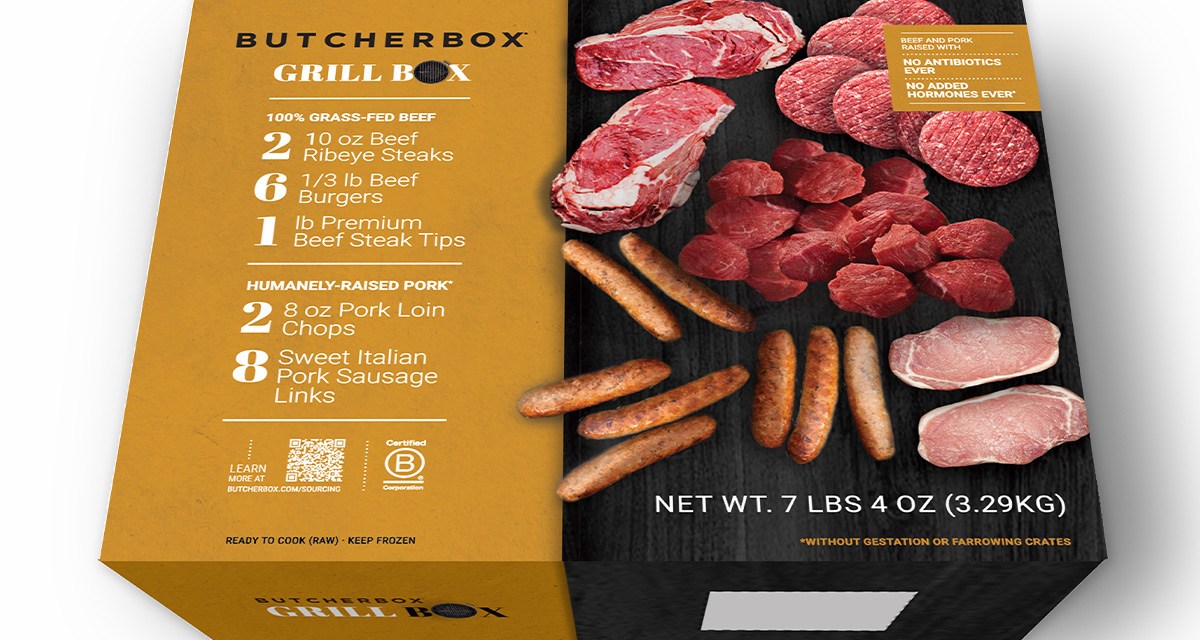How ButcherBox’s affiliate marketing strategy has evolved

When subscription meat service ButcherBox launched in 2015, it quickly adopted affiliate marketing as a means to acquire online customers in a relatively cheap way. Much of this was done by reaching out directly to digital creators to spread the word about ButcherBox’s meat cuts. Today, the company still relies on this army of power users-turned-influencers to drive its affiliate marketing strategy.
At the Modern Retail DTC Summit, held this week in Naples, Florida, ButcherBox CMO Kiran Smith spoke about the way the company builds long term loyalty among customers.
ButcherBox was founded at a time when diets like keto and paleo were coming into the spotlight – which revolve heavily around eating healthy proteins. This helped ButcherBox position itself as a convenient solution for home cooks interested in premium meat, poultry and seafood. “It was a little bit of a ‘right place, right time,’” said Smith. Later on, Covid helped propel the interest in ButcherBox’s delivery service even further, as more people ordered groceries to be delivered. The bootstrapped company, which started through a Kickstarter campaign, generated $600 million in revenue as of 2022.
The company’s launch timing also helped it build out robust affiliate marketing early on, before the strategy became a standard part of many DTC playbooks. ButcherBox worked with digital creators by having them showcase the deliveries in their recipes. In turn, the company paid out commissions in exchange for the content. “We still have some of our original influencers who are still receiving a check,” Smith said. “It’s just that now it’s become more of a business.”
Given its subscription model, ButcherBox focuses largely on lifetime value (LTV) following customer acquisition from channels like influencer and affiliate marketing. One of the main focal points for retention is strengthening the relationship with new customers throughout the first three box deliveries, which Smith said is roughly in the first three to six months. “If you get three boxes, we got you,” she said. “We want to make sure you’re staying engaged to show value and get you excited about the next box.”
Eight years ago, it was much easier to source and retain creators, given that the influencer was in its infancy. These days, however, ButcherBox has a more sophisticated model for onboarding and working with creators and influencers. When starting out, ButcherBox simply provided influencers with recipe cards in their boxes to make and share with followers — along with a unique referral code. With the influencer space becoming more crowded, Smith said now the challenge is in finding authentic partners who can speak to the brand.
But the company is now being much more thoughtful about the creators it works with. These influencer accounts tend to be medium-sized, which Smith said is the “sweet spot” for ButcherBox. As such, the company now works with external agencies to identify and get access to medium-sized influencers that the company may not be able to sign on its own.
While the company uses a variety of paid marketing channels, affiliate referrals remain effective in terms of cost and long-term retention.
The strategy is also part of ButcherBox’s approach to growing its customer base through online communities. One example is ButcherBox’s Facebook group, Smith said, where 5,000 members are constantly sharing cooking tips and recipes. The idea is to create organic opportunities for some of ButcherBox’s biggest fans to create content and spread the word about the company’s products.
As such, Smith said a ButcherBox influencer’s follower size doesn’t matter. Instead, the company looks for a “type” of creator dictated by their interest in food. “It’s someone who loves to cook and has the passion to talk about, not only the protein on the plate, but show people how to get that meal on the table in under 30 minutes.”

